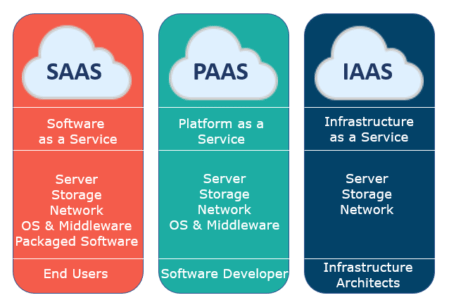Title: The Power of Cloud Computing and Its Types: A Revolution in the Digital Age

Introduction
In an era where digital transformation is the driving force behind innovation and efficiency, cloud computing has emerged as a transformative technology that is shaping the way we work, live, and interact with the world. Cloud computing is not merely a buzzword; it’s a fundamental shift in the way we approach information technology. In this article, we will delve into the fascinating world of cloud computing, exploring its unique attributes.The term “cloud” has become synonymous with the internet, but its significance goes far beyond mere data storage. In this article, we will embark on a journey to explore cloud computing and its various types, revealing the multifaceted realm of cloud technology that is shaping our digital landscape.
The Essence of Cloud Computing
At its core, cloud computing is a technology that delivers computing services and resources over the internet. These services encompass a wide range of capabilities, including storing, processing, and analyzing data, running applications, and more, without the need for local hardware or software. Cloud computing service providers, such as Amazon Web Services (AWS), Microsoft Azure, and Google Cloud, maintain vast data centers packed with powerful servers and cutting-edge infrastructure to host these services.
Understanding Cloud Computing
Cloud computing is a technology that provides an array of services, including data storage, processing, and application hosting, over the internet. Instead of relying on local hardware or software, users access these services via remote servers managed by cloud service providers. This abstraction of resources offers a host of benefits, including scalability, cost efficiency, and accessibility.
Types of Cloud Computing
Cloud computing comes in various flavors, each designed to meet specific needs and preferences. Here are the three primary types of cloud computing:

1. Infrastructure as a Service (IaaS):
IaaS is the foundation of cloud computing. It provides virtualized computing resources, including servers, storage, and networking, to users on a pay-as-you-go basis. With IaaS, businesses and individuals can build, manage, and scale their own virtual data centers without the need to invest in physical infrastructure. Prominent IaaS providers include Amazon Web Services (AWS), Microsoft Azure, and Google Cloud Platform.
2. Platform as a Service (PaaS):
PaaS takes cloud computing to the next level by offering a platform for developers to build, deploy, and manage applications. It includes tools, libraries, and frameworks that simplify the development process. PaaS is ideal for software developers who want to focus on coding rather than managing infrastructure. Platforms like Heroku, Google App Engine, and Microsoft Azure App Service are popular choices.
3. Software as a Service (SaaS):
SaaS delivers fully functional software applications over the internet on a subscription basis. This type of cloud computing is accessible through web browsers, eliminating the need for local installation. Examples of SaaS applications range from office productivity tools (e.g., Microsoft 365, Google Workspace) to customer relationship management software (e.g., Salesforce) and countless others. SaaS is user-friendly and widely adopted by businesses and individuals.
Choosing the Right Cloud Type
Selecting the appropriate type of cloud computing depends on your specific needs and preferences. Businesses often use a combination of these types, a strategy known as multi-cloud or hybrid cloud, to optimize their operations.
– If you require fine-grained control over infrastructure, IaaS is the way to go.
– For developers seeking to streamline application deployment, PaaS offers an efficient solution.
– SaaS is perfect for accessing ready-made software applications with minimal management.
– FaaS is an ideal choice for cost-efficient, event-driven computing.
What Sets Cloud Computing Apart?
Cloud computing allows businesses and individuals to scale their computing resources up or down as needed. Whether you’re running a small website or managing a global enterprise, the cloud can adapt to your requirements. This elasticity ensures that you pay only for what you use, making it a cost-effective solution for businesses of all sizes.
The cloud’s accessibility is its hallmark feature. Users can access their data, applications, and services from anywhere with an internet connection. This has been a game-changer in our increasingly mobile and remote work-oriented world.
Traditional IT infrastructure involves substantial upfront costs and ongoing maintenance expenses. Cloud computing eliminates the need for expensive hardware and software, reducing capital expenditure. Additionally, businesses can save on operational costs by outsourcing maintenance and security to cloud service providers.
Leading cloud providers invest heavily in robust security measures, ensuring that your data remains protected. Data centers are equipped with state-of-the-art security systems, redundant power supplies, and backup protocols to minimize downtime.
Cloud computing enables rapid innovation by offering an array of cutting-edge services, from artificial intelligence to machine learning and big data analytics. With the cloud, businesses can experiment with new technologies and ideas without the need for significant infrastructure investments.
Cloud computing is more than just a technological advancement; it’s a profound shift in how we live and work. It offers unparalleled scalability, accessibility, and innovation, making it an indispensable tool in the digital age. As businesses and individuals continue to leverage the power of the cloud, the possibilities for growth, efficiency, and innovation are boundless. The cloud has transcended being just another buzzword; it’s a revolution in the making, shaping our world for years to come.
